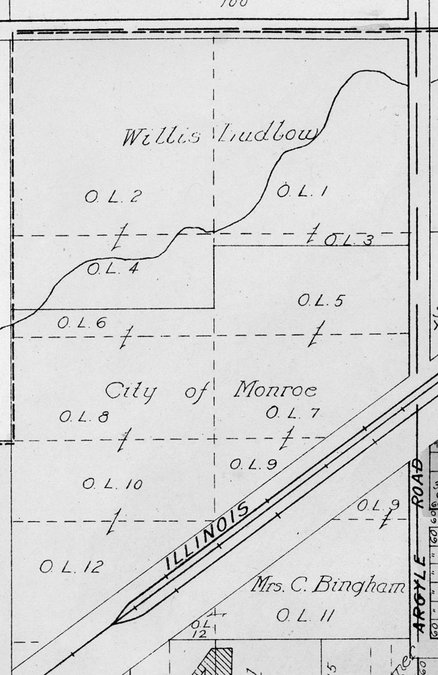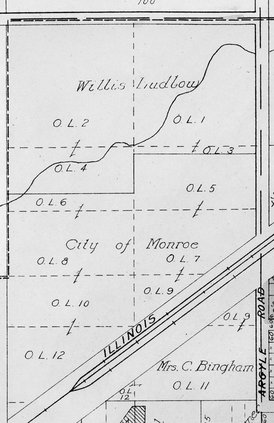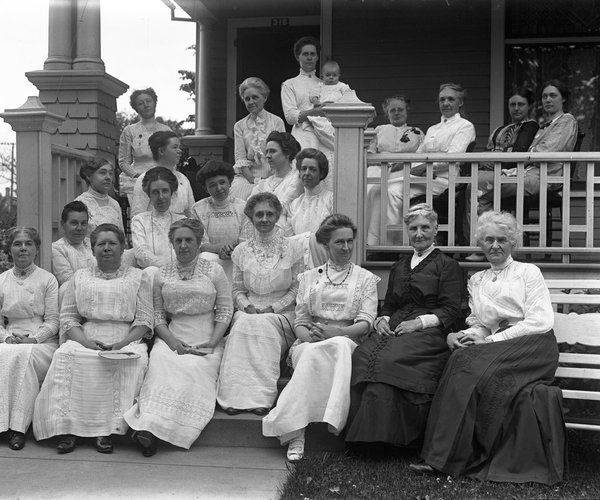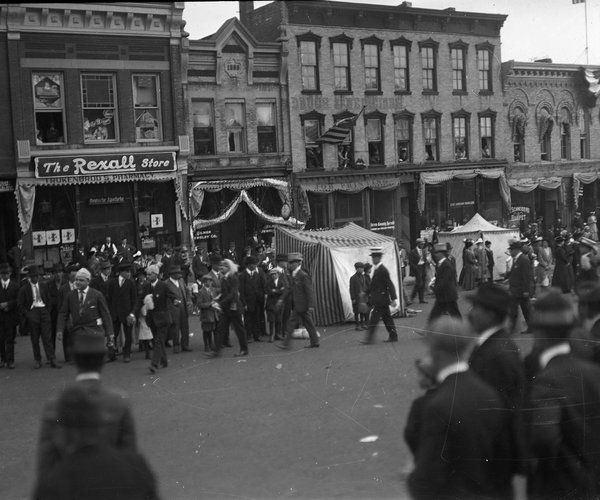The dedication of Twining Park in 1960 was the topic of a recent column. Most people probably didn’t know that much of that park had previously been known as Bingham Park. This column, and the next one, will explain why it once had that name and why that name was changed.
The Monroe Evening Times stated on October 26, 1908 that Mrs. Caroline Bingham had proposed that morning to give the city 20 acres of land north of the Illinois Central railroad tracks for a public park that would be maintained by the city. The city council was to consider that offer in January when Mrs. Bingham’s son, Homer, would be here from Denver. The city accepted that offer, but not much more was printed soon afterwards.
Caroline was the widow of John A. Bingham; he had been a resident of Monroe since February 1842. She, another early resident of Monroe, was born in Illinois and came to Monroe with her mother in 1840 at the age of 16. The couple was married here in November 1843. Bingham was a lawyer, a judge, and a banker. They accumulated much land before he passed away in 1865 while visiting Vermont. Caroline was left to deal with his estate.
Caroline stated in a deed dated July 14, 1909 that she had “for nearly 70 years last past resided in the City of Monroe . . . and has ever had for the same and the inhabitants, thereof, a deep and abiding affection, and being desirous of promoting their welfare, and in commemoration of her own residence among them, proposed to donate to said City a tract of land therein for a public park.” This land included all of three outlots and parts of five more that lie northwest of the Illinois Central railroad right of way. There was a stipulation that this land would always be known as “Bingham Park.” Henry Ludlow and H. W. Bingham were witnesses.
An article on October 27 stated that “the new park commissioners . . . brought up the matter of straightening the north line of Bingham Park.” There was a jog on the north end of the park that could be straightened out by disposing of a strip four rods wide and 40 rods long.
Another article on November 2, 1909 stated that Willis Ludlow presented a petition agreeing to pay $500 for that strip off the north side of the property. He made the offer on the condition “that the money be used in improving the park.” He had been after that property “for some time,” but Mrs. Bingham had declined to sell it to him.
Mrs. Bingham agreed to the sale and waived all claims providing the money was used to improve the park. However, she had changed her mind by the beginning of December and refused to sign the deed after the papers were ready for signatures. She had second thoughts and felt “it might form a precedent for other deals.”
Even though nothing was reported about improvements being made to the land, it was being used.
Fourteen lady clerks from the J. T. Etter Dry Goods store held a “Moonlight Picnic” there on June 7, 1911 with a fine lunch and a marshmallow toast. That event served as a farewell for Belle McElroy, who was leaving for her home in Corning, Iowa. The MHS class of 1909 held their annual reunion there on July 3, 1912 “with a marshmallow toast and a weiner roast.”
Nothing more was printed in the newspaper until July 1, 1912. “Swimming enthusiasts have started an agitation to have the creek in Bingham Park deepened and put in shape for a swimming pool, the claim being made that the city should afford such a place for the boys and men who delight in bathing.” It was reported that $498 remained from the $1,000 put in the park improvement fund in 1909. It was proposed that the city appropriate at least $300 with an additional $100 raised by private subscription from those who would “patronize a swimming pool.”
A petition from a number of citizens to have Bingham Park converted into a golf course was not granted on the evening of June 11, 1915. The committee, to which the proposition had been referred, ruled the matter was not within the jurisdiction of the board.” George Pietzach was the president of the board at that time.
Mrs. Bingham passed away on March 25, 1917 at the age of 92. Only one of her children, Homer W. Bingham of Denver, was still living. She was also survived by two grandchildren, Edwin B. Copeland, of Manila, Philippines, and Herbert B. Copeland, of Denver, as well as a sister, Lucena Sykes of Monroe.
It was reported the next month, on April 18, that Alderman S. J. Stauffacher had “presented a resolution, fathered by Mayor J. T. Etter, as a result of the appeal of President Wilson, and a concurring appeal of Governor Phillipp, that steps be taken for the increasing of the food supplies in all sections of the country.
“The resolution empowers the turning of the virgin soil of the twenty-two acres in the Bingham park and the planting of the same to some useful food crop. The selection of the crop is left in the hands of the street department, but it was conceded by the members of the council that if the plan was found feasible, and the expense would not be too great, the principal crop to be raised will be potatoes.”
Find out next week if they planted the potatoes and why the park “lost” the Bingham name.
— Matt Figi is a Monroe resident and a local historian. His column will appear periodically on Saturdays in the Times. He can be reached at mfigi48@tds.net or at 608-325-6503.





